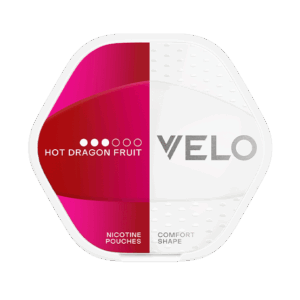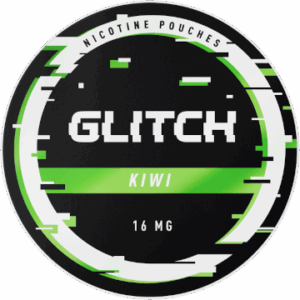Introduction
Nicotine pouches have quickly carved out a major share of the smokeless product market. According to the U.S. Centres for Disease Control and Prevention (CDC), sales of nicotine pouches jumped from around six million units in 2016 to over 334 million in 2023. This surge reflects both tighter regulation of cigarettes and vapes and the growing appeal of discreet oral alternatives.
But a new subcategory has emerged — nicotine-free pouches — designed for those who enjoy the pouch experience without nicotine. Many of these even take cues from classic Swedish confectionery, offering fruity, sweet flavours that feel familiar yet refreshing. Sometimes known as zero-nicotine or herbal pouches, these products replace nicotine with caffeine, vitamins, or natural plant fibres.
In this guide, we’ll explore what nicotine-free pouches are, how they differ from tobacco-free nicotine pouches, their safety aspects, and the rise of energy and nootropic pouch alternatives.
What Are Nicotine-Free Pouches?
Definition and Ingredients
Nicotine-free pouches are small, soft sachets placed between the lip and gum — similar to traditional snus or modern nicotine pouches — but without any nicotine or tobacco. Instead, they’re typically made from plant-based fibres blended with natural flavourings like mint, berry, citrus, or dessert notes.
Some variants include caffeine or herbal ingredients to add a gentle stimulating effect, while others focus purely on flavour and mouthfeel. Since they don’t contain nicotine, they aren’t regulated as tobacco products and are often marketed as a non-addictive alternative for those who want the same sensory ritual without the chemical dependence.
Typical ingredients include:
-
Cellulose or plant fibres for pouch structure
-
Natural and artificial flavourings (mint, fruit, menthol, etc.)
-
Herbal extracts like chamomile or green tea
-
Optional additions like caffeine, B-vitamins, or adaptogens
Read our guide: How Much Nicotine Is In A ZYN Pouch
Why Choose Nicotine-Free Pouches?
People turn to nicotine-free pouches for various reasons:
-
Nicotine reduction or cessation – They allow users to maintain the familiar ritual of having a pouch under the lip without reintroducing nicotine or its addictive effects.
-
Discreet use – These pouches are odourless, smoke-free, and easy to use in public spaces, offices, or transport.
-
Avoiding tobacco-derived chemicals – Unlike tobacco-free nicotine pouches, nicotine-free products contain no nicotine salts or synthetic derivatives. They eliminate exposure to carcinogens, making them a cleaner choice for adults seeking oral satisfaction.
Are Nicotine-Free Pouches Safe?
In general, nicotine-free pouches are considered much safer than their nicotine counterparts, since they exclude both tobacco and nicotine. However, it’s still wise to read labels and monitor caffeine or sweetener content.
Overuse of stimulant-based pouches (especially those with caffeine) can lead to side effects such as:
-
Increased heart rate
-
Jitteriness or anxiety
-
Elevated blood pressure
Even though most herbal formulations are mild, they should still be used responsibly — especially those containing active ingredients.
Tobacco-Free Nicotine Pouches
What They Are
Tobacco-free nicotine pouches deliver nicotine either extracted from tobacco or made synthetically, without containing any tobacco leaf. They are marketed as a modern, smokeless, spit-free alternative to smoking or vaping, available in varying strengths and flavours.
Popularity and Regulation
The popularity of nicotine pouches has exploded since 2016, paralleling stricter laws on cigarettes and e-cigarettes. However, while major brands have applied for regulatory approval, most remain in a grey area awaiting full authorisation.
Potential Health Risks
Nicotine remains a highly addictive substance, with the U.S. Surgeon General comparing its addictiveness to that of heroin. Some pouch brands have been found to contain harmful chemicals such as formaldehyde, nickel, or ammonia.
Nicotine can also affect heart rate, blood pressure, and brain development in younger users. In 2024, roughly 480,000 U.S. youths reported using nicotine pouches, underlining growing concerns about accessibility and youth appeal due to discreet packaging and fruity flavours.
How They Compare to Nicotine-Free Pouches
While both types of pouches look and feel similar, tobacco-free nicotine pouches still expose users to addiction and potential health risks. Nicotine-free pouches, by contrast, remove that risk entirely.
However, if someone is trying to quit nicotine, a gradual reduction plan with professional support may be more effective than switching immediately to nicotine-free products.
Read our guide: Where Is ZYN Made?
Alternatives: Caffeine and Nootropic Pouches
Caffeine Pouches
These resemble nicotine pouches but use caffeine as the active ingredient. Each pouch can contain anywhere between 25 mg and 200 mg of caffeine — absorbed quickly through the mouth. Common flavours include cola, sour cherry, peach iced tea, and gummy bear.
They offer an instant, sugar-free energy boost, but should still be used carefully. Overuse may lead to anxiety, palpitations, or insomnia. Health experts advise that teens and young adults keep total caffeine intake moderate — and store these products safely away from children.
Nootropic Pouches
Nootropic pouches combine various supplements designed to support focus, memory, or mental energy. Ingredients often include caffeine, L-theanine, Ginkgo biloba, Rhodiola rosea, and B-vitamins.
While these can be appealing to professionals and students, research into long-term effects remains limited. Users should check for interactions with other supplements or medications before use.
Balancing Benefits and Risks
Energy and nootropic pouches highlight how versatile the pouch format can be. While they avoid nicotine, they introduce other active substances that need to be used mindfully. High caffeine doses can cause overstimulation, while herbal nootropics vary in safety and scientific support.
For those simply seeking an oral habit without any stimulants, nicotine-free pouches are still the safest option. Choose trusted brands, read the ingredient list carefully, and use them moderately.
Summary
Nicotine-free pouches represent a growing movement within the oral pouch market — one focused on flavour, enjoyment, and health consciousness. While nicotine pouch sales have skyrocketed globally, concerns about addiction and chemical exposure continue to rise.
Brands like ZYN and VELO have popularised the pouch format, but many adults now prefer similar experiences without nicotine altogether. Nicotine-free options offer that — providing the same convenient, discreet design but relying on plant fibres and natural flavouring instead.
As the market for nicotine pouches UK continues to expand, more users are turning to herbal and caffeine-based options that provide flavour and satisfaction without dependence. Whether you’re transitioning away from nicotine products like ZYN or simply looking for a refreshing oral pouch experience, nicotine-free pouches offer a balanced, modern solution.





